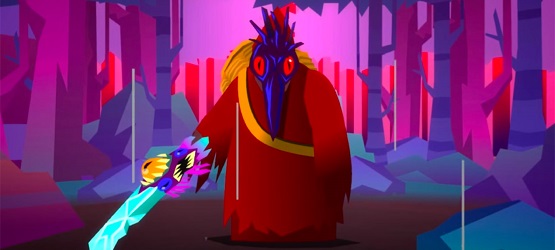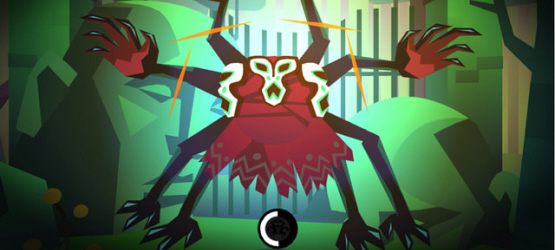
I sympathize with PlayStation Vita fans who feel that Sony ditched its successor to the PSP before it really got a chance to get off the ground. While I may not have been right there with the system on day one, a number of key releases in my favorite genre eventually convinced me to pick up the beleaguered little handheld — and though by that point its fate was sealed, quite a few of the games I’ve played have made me wonder what things might have been like had support not been dropped so quickly. Severed is one of those games. Created by the geniuses behind Guacamelee!, it’s another strikingly inventive project filled to the brim with inspired art and music, masterful level design and a great central character.
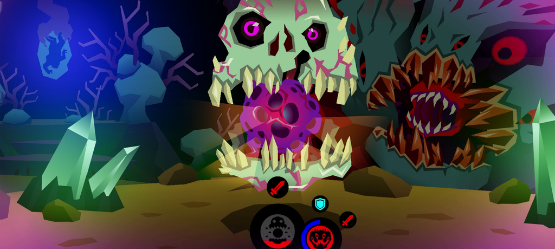
Inventive and Modern
DrinkBox’s M.O. seems to be taking what would otherwise be a dated approach to classic genres, then modernizing them with style and innovation. In this case, the framework is that of an old first-person RPG, and the “style and innovation” are the amazing art style (which I’ll talk about later) and the touch-driven battle system, respectively. “But wait,” you say, with your console-gamer sensibilities, “Haven’t these people ever heard of buttons? I’m not playing a game on my phone!” No, fear not; DrinkBox has not forsaken you. Instead, they’ve implemented just about one of the coolest and most original combat systems I’ve seen in a long time, one that successfully blends a touch interface with traditional action-RPG trappings.
As you’re navigating through any of Severed’s maze-like levels, you’ll run into enemies that you engage in the first-person. Using your finger, you can swipe across the screen to have main character Sasha use her blade in the same motion; it’s a lot like Fruit Ninja, only with freakish multi-armed monsters in place of kiwi and oranges. These battles have a rhythm to them, indicated by the circular meter along the bottom of the screen. You’ll have your chance to attack until the yellow part of the meter runs all the way around to form a complete circle, at which point you’ll face one of your foe’s moves. This leads to a number of different approaches that make every battle feel like a unique challenge, and even a bit of a puzzle the first time around — for example, there are enemies you’ll need to parry to avoid taking damage, as well as enemies whose meter takes a much longer time to accumulate but land an unavoidable hit unless you cut them down to size.
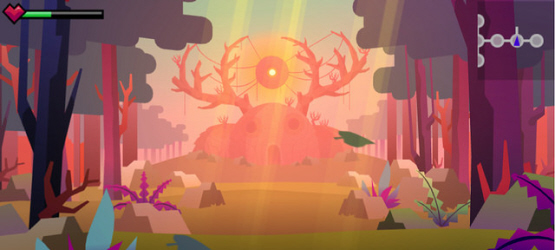
Creative Combat
Enemies like the latter example, such as the mushroom-growing fiends found early on, aren’t really too much of a challenge unless you’re facing multiple enemies at once. Then, each additional enemy is a nightmare. That’s because you only have one enemy on the screen at a time; taking care of the others means you need to physically turn toward them to parry an attack or cut them down to drain their meter. Particularly in the late game, this makes combat go on a bit longer than it really needs to (particularly in the case of enemies who use irritating buffs or give Sasha a status effect).
Still, if you’re good, you can really reap the rewards. Successfully building up a combo of hits on the enemy without getting parried or damaged will cause your focus meter to grow, and maxing out your focus ends the battle with a special sequence that gives the game its title. With things brought down to slow motion, you’ve got to slash lines across each of the enemy’s limbs and eyes, which will cause them to drop down to the ground and be collectible. Once you’ve got several on hand (pardon the pun), you can take them to the upgrade screen and exchange them for permanent increases in certain stats and abilities.
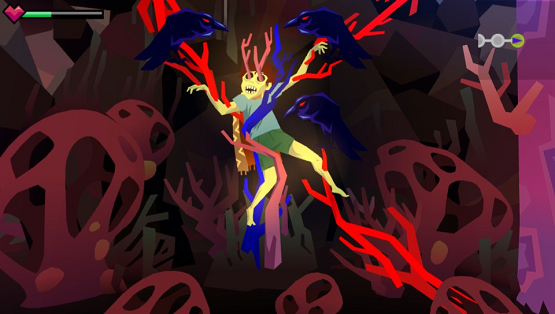
Morbid Vibrance?
If you thought Guacamelee! looked great, just wait until you see this game. Like its predecessor, its visuals take cues from the use of multiple bright colors and sharp angles of the sort of art you’d see at a Mexican Dia de Muertos celebration. Each square of the map you move through is a little like a diorama, a self-contained room decorated with memorable set pieces, giving you a lot of incentive to look around before you charge on ahead. The creatures, though, are perhaps the most strikingly aspect of the art direction — with each needing to provide a unique challenge in the game’s battles, as well as possess multiple eyes and limbs for you to sever and collect, it’s pretty amazing just how diverse and varied the results really are. And while this particular game might lack the energetic, cultural music that made DrinkBox’s last game such a pleasure to listen to, Sasha’s adventure is accompanied by an eerie and tense score that much better suits the navigation of Severed’s tight corridors.
Limb From Limb
It’s a shame that Severed came so late in the Vita’s life cycle, because it had me wondering whether or not more games like it could have saved the system. That’s just wishful thinking, of course, so it’ll just have to remain what it is: an incredible eleventh-hour treat for fans who have invested their time and money into the handheld. If you enjoyed Guacamelee!, you’ll find a lot of what you loved in that game has returned. Vibrant colors with a unique “diorama” artstyle really pop off the screen, and its inventive gameplay successfully combines touch-twitch antics and old-fashioned role playing. There may not be enough reasons to shell out for a Vita now, but if there had been more content like this arriving alongside the system back in 2012, we might have seen a very different fate for Sony’s second portable.
Severed review code provided by publisher. For more information on scoring please see our Review Policy here.
-
Gorgeous graphics with a real sense of individual style
-
Gameplay features a highly original concept that successfully branches off into new ideas
-
Soundtrack effectively brings tension to the game's environments
-
Inventive level design that continually evolves what you've already learned
-
Combat gets wearisome after a while
-
The late game ratchets up the annoyances a bit too much
DrinkBox Games Gallery
-
Tales from Space: About a Blob
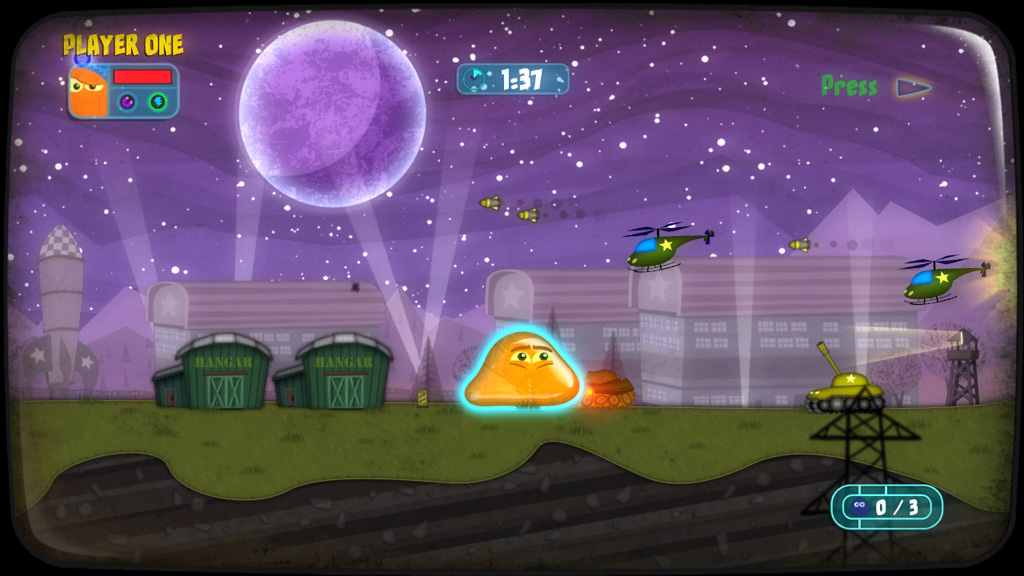
Release Date: February 2nd, 2011
Platforms: PlayStation 3
Released to PlayStation Plus users one week before the general PSN release, Tales from Space: About a Blob was DrinkBox's first game. The game is about a blob (how about that?) who comes to Earth. Starting off tiny, you devour things to grow in size, solving puzzles with a variety of abilities gained throughout the game. This game set the stage for the unique art style that has become synonymous with DrinkBox. We also had an interview with DrinkBox just before the release of About a Blob, which you can check out here.
-
Tales from Space: Mutant Blobs Attack
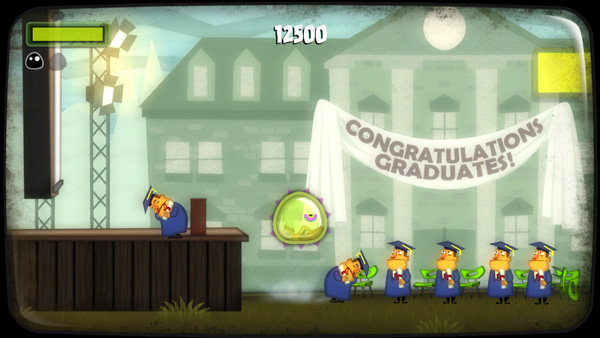
Release Date: February 21st, 2012
Platforms: Vita, PS3, Xbox 360, PC/Mac
Tales from Space: Mutant Blobs Attack is the follow up to DrinkBox's inaugural game. Retaining the same art style and basic gameplay, however it is far expanded from About a Blob, featuring new powers, puzzles, and incorporating touch controls into the mix. The game won numerous awards and accolades, prompting DrinkBox to consider Mutant Blobs Attack their first real success.
-
Guacamelee!
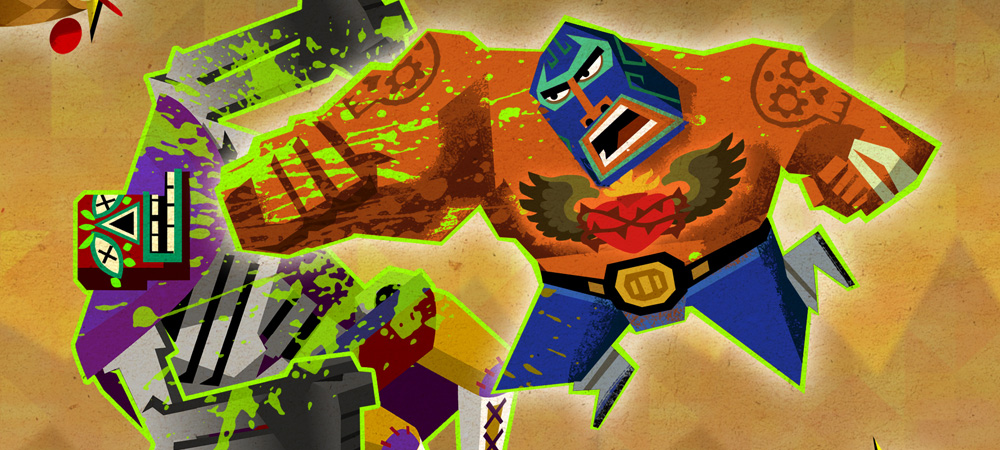
Release Date: April 9th, 2013
Platforms: PS3, PS4, Vita, Xbox 360, Xbox One, Wii U, PC/Mac
Read the original PSLS review here.
Read the Super Turbo Championship Edition PSLS review here.
Foregoing blobs in favor of luchadors, DrinkBox's most recent title, Guacamelee!, is filled with more humor, poking fun at other games as the main character, Juan, fights his way through enemies in the search for El Presidente's daughter. Add in some platforming and puzzle solving and you have a surprisingly deep game that was just given a re-release on the new generation of consoles last year in the form of the Super Turbo Championship Edition of the game.
